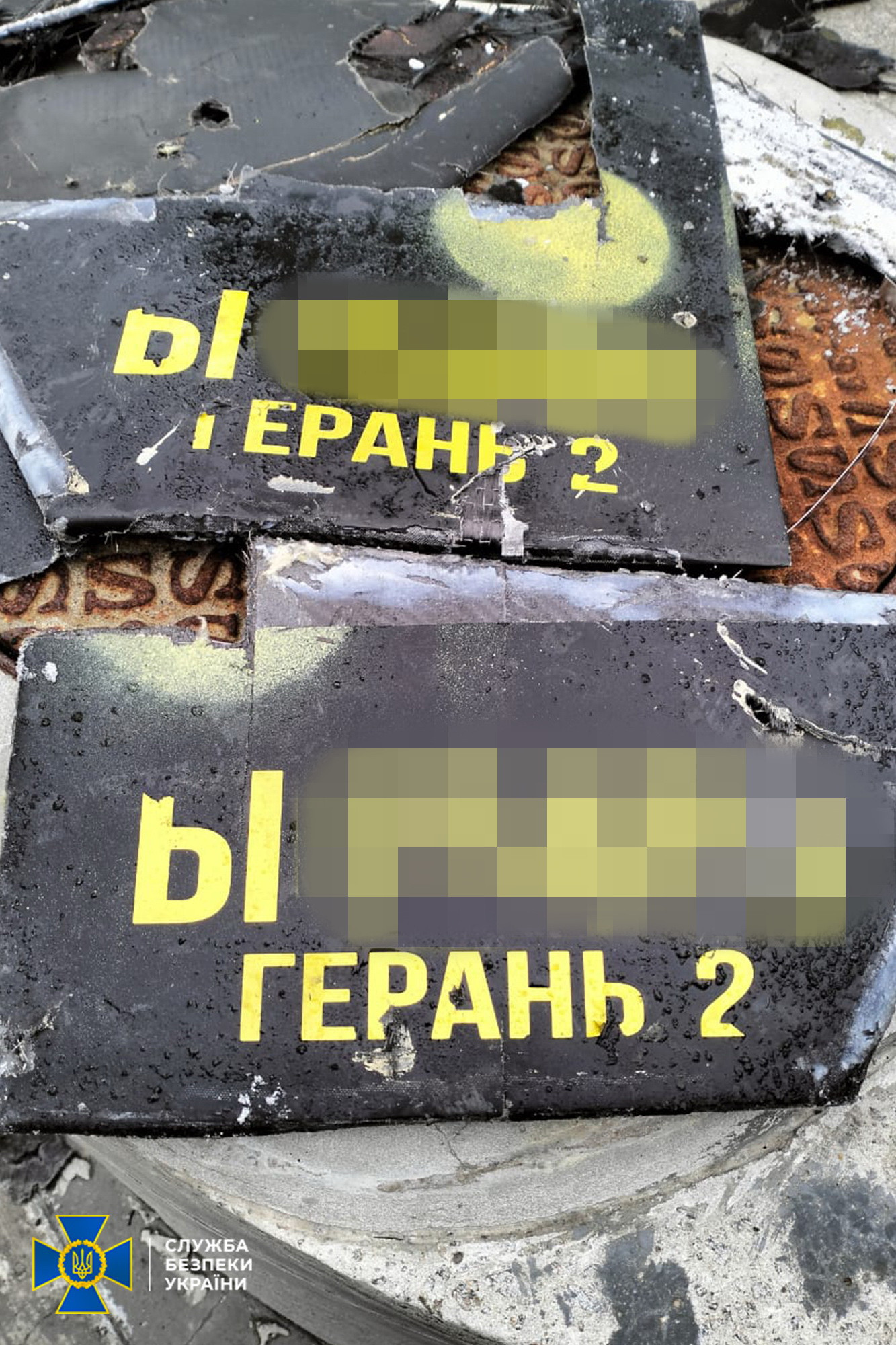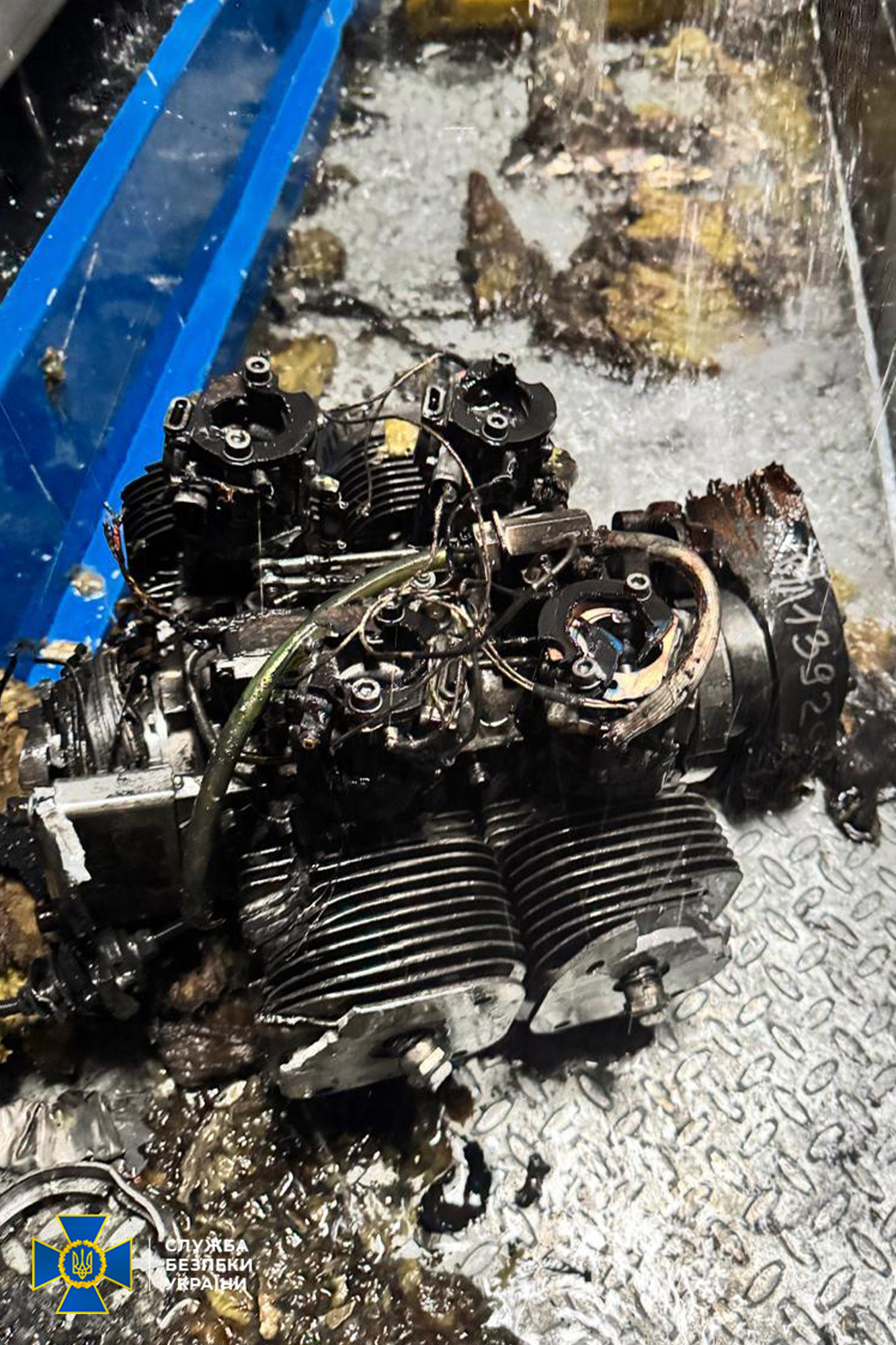Russia has deliberately attacked a nuclear facility with a drone, claims the SBU
On the night of February 14, a Russian drone targeted the fourth reactor block of the Chernobyl Nuclear Power Plant. Fortunately, the strike did not cause a radioactive leak, but efforts to extinguish the fire on the roof of the protective structure are still ongoing.
Kashtan NEWS reports what is currently known about the situation and radiation background at the Chernobyl NPP.
Deliberate Attack
According to the conclusions of the Security Service of Ukraine, which investigated the site and debris of the drone that struck the shelter of the fourth reactor block, the drone turned out to be a Russian "Geran-2" of the "Shahed" type.
 7
7 “For maximum fire damage, this strike drone was equipped with an explosive warhead. Experts estimate that the Russians specifically targeted this facility,” – reported the SBU press service on February 14.
 8
8 As of 1:00 PM on February 16, firefighting efforts were still ongoing: rescuers are currently extinguishing the filler of the external cladding of the reactor block's protective structure.
“No deterioration of the radiation situation at the NPP site or in the Chernobyl Exclusion Zone has been recorded. No release of radioactive products beyond established limits has been detected,” – stated today’s report from the State Agency of Ukraine for the Management of the Exclusion Zone.
 9
9 Where the "Shahed" Struck
The fourth reactor, which exploded in 1986, is protected by two protective structures. The first, known as the "Shelter" or "sarcophagus," was built from May to November 1986, directly after the disaster. Almost 90,000 people were involved in its construction, using over 400,000 cubic meters of concrete and 7,300 tons of metal for the framework.
The sarcophagus is a massive steel-concrete structure that partially rests on the damaged reactor building. Beneath this structure lies 200 tons of radioactive fuel-containing material (the so-called corium formed in the reactor's active zone after the explosion), 30 tons of radioactive dust, and 16 tons of uranium and plutonium.
Project developers predicted a service life of 20-40 years for the sarcophagus, but by 1996, the structure had deteriorated to such an extent that immediate stabilization measures were required. In 1998, with the assistance of the European Bank for Reconstruction and Development (EBRD), the sarcophagus's conservation was completed, which included protecting rusty support beams from collapse. However, the facility remained leaky: rainwater pouring through roof openings seeped through the reactor's bottom into the ground.
Therefore, in 2012, construction of a new protective structure – the so-called New Safe Confinement (NSC) – began over the sarcophagus. A construction contract was signed between the Ukrainian government, the EBRD, and the Franco-British-German-Ukrainian consortium "Novarka." The project involved 10,000 workers and engineers from 40 countries.
The New Safe Confinement was primarily funded by the EBRD, the USA, and the European Commission. The total project cost exceeded two billion US dollars. Upon completion in 2019, the new sarcophagus in the shape of an arch became the largest land-based structure in the world: its area is 86,000 square meters, and its height is 110 meters. Thus, the NSC is taller than London's Big Ben and the American Statue of Liberty.
 0
0 On February 14, 2025, the Russian "Shahed" struck the roof of the New Safe Confinement. As Simon Evans, head of the EBRD's "Shelter" fund, stated in a comment to the BBC, the confinement was not designed to withstand such attacks.
“It was designed to be very reliable for events such as extreme weather conditions, but it will not withstand a missile strike. It is intended for the storage of remnants of the old destroyed reactor and to ensure the possibility of long-term decommissioning, but not for protection against external attacks,” Evans said.
What was Damaged: Details from the DAZV
As reported by the State Agency of Ukraine for the Management of the Exclusion Zone on February 14, the direct hit of the "Shahed" occurred at a height of 87 meters, above the technological equipment room that remotely ensures the functioning of the New Safe Confinement.
 1
1 As a result, the external and internal cladding of the NSC arch and the equipment of the main crane systems were damaged.
“A local fire was also detected in the external and internal cladding of the NSC arch. Emergency firefighting units of the State Emergency Service and personnel from the Chernobyl NPP arrived quickly at the scene, and open flames were extinguished over an area of about 40 square meters. There were no injuries from the incident, and no release of radioactive substances beyond established limits has been recorded,” – reported the DAZV.
On the morning of February 15, the agency published details of the technical condition inspection of the facility. According to this report, the following damages were recorded at that time:
- through-and-through damage of approximately up to 15 sq. m;
- cladding defects without complete destruction up to 200 sq. m;
- damage to the internal filler of the cladding;
- destruction of bolt connections;
- deformation of connection nodes of the upper part of the maintenance garage.
 2
2 As explained by Yaroslav Yemelyanenko, a member of the Public Council for the Management of the Exclusion Zone, the "Shahed" created a hole in the arch where "delegations walk."
“In the photos and videos, a hole is visible in the arch area where delegations usually walk. The opening from the drone in the confinement will not affect the radiation background of 'mainland Ukraine.' After all, the 'Shelter' facility, which has been covering the remains of the fourth reactor since 1986 and is located under the confinement, has not yet been dismantled. However, it may lead to an increase in background radiation around Chernobyl itself,” – Yemelyanenko wrote on his Facebook page.
Reactions from Ukraine and the World
Speaking on February 15 at a security conference in Munich, President of Ukraine Volodymyr Zelensky noted that the terrorist country's strike on the Chernobyl NPP is a clear indication that Russia does not want peace.
 3
3 “The 'Shahed' drone, modified by Russia using Iranian technologies, carried at least 50 kg of explosives. We view this as a symbolic step from Russia. Just recently, we discussed nuclear energy in Ukraine as a key factor in energy security despite constant Russian attacks. We are preparing to expand the Khmelnytsky Nuclear Power Plant – literally a day before Munich, I was there at the plant – with the participation of American businesses, including Westinghouse. This will enhance energy security not only for Ukraine but for all of Europe. We also discussed the Zaporizhzhia NPP – the largest nuclear power plant in Europe, which has been occupied by Russia – with President Trump and his team. And what is Russia's response? A drone strike on the sarcophagus of the Chernobyl NPP, which contains radioactive dust and debris,” – said Volodymyr Zelensky.
IAEA representatives, who have been at the Chernobyl NPP since September 2022, confirmed that they heard an explosion on the night of February 14 and saw fire and smoke.
 4
4 “Fire safety personnel and vehicles arrived at the scene within minutes to extinguish the flames, which were intermittently observed for several hours. The IAEA team saw a breach in the outer layer of the NSC that occurred after the detonation,” – stated a post published on the official IAEA website.
The next day, the reaction of IAEA Director General Rafael Grossi was made public.
“It is clear that this was a very serious incident when a drone struck and damaged a large protective structure at a major nuclear site. As I have repeatedly stated during this destructive war, attacking a nuclear facility is absolutely forbidden and must never happen,” – stated Grossi on February 15, although he did not name the drone as Russian.
The